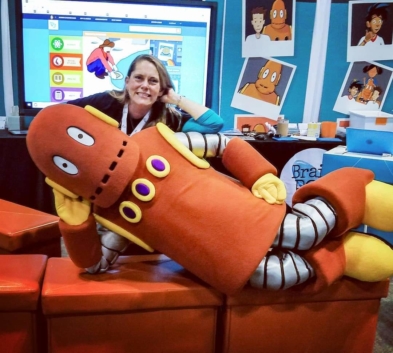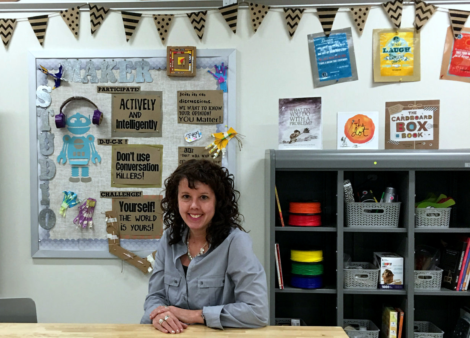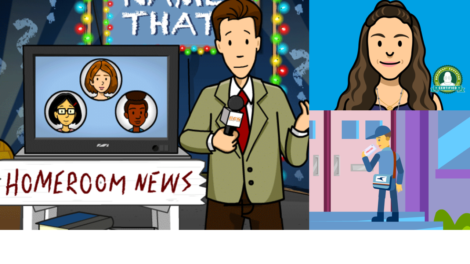
Student Choice to Demonstrate Mastery – A CBE Aha! Moment 1.19
Posted by cemignano on
Reflection is an important exercise to encourage professional growth. To become a Certified BrainPOP Educator, we ask candidates to identify a past teaching practice or project, and brainstorm ways BrainPOP could be used to improve it. We’re excited to share this Aha! Moment from Tina Hackey, our January CBE of the Month, in the hopes that we can inspire you to grow as an educator, as well.
Tell us your BrainPOP “Aha! Moment”. What specific use or application of BrainPOP excited you? How did it change your expectation for using BrainPOP in your teaching practice?
My BrainPOP “Aha! Moment” came in January 2015 at the Future of Educational Technology Conference (FETC) in Orlando, Florida. I had been attending for years, always making sure to get my picture taken with Moby and scoring some bookmarks and maybe a pen. This year, I decided to attend a BrainPOP classroom session. This really awesome, energetic guy named Andrew Gardner started talking about the ability to create INDIVIDUAL STUDENT ACCOUNTS and he said that it was available for all countywide subscriptions. The possibilities were endless. My first order of business was to email everyone I could think of at the district level who could unlock this magic capability. Within a couple of days, I was sent the magical school code and BAM! I set up individual accounts for all 19 third-fifth grade classes that I taught. The rest of my BrainPOP obsession is history.
What is a specific lesson or unit you’ve taught in the past that you have re-formulated to bring in the new tools, features, or content you discovered through the CBE process?
As many as I can! Teachers have done a great job differentiating student learning. One area that hasn’t advanced much, especially because of high-stakes testing, is differentiation in how students show mastery. It takes a huge leap of faith to allow students CHOICE in showing what they know. Education reform has made many of us afraid to allow students to use tools such as Make-a-Map or Make-a-Movie to show that students understand concepts. We need to see that they can answer that multiple choice question. The great thing about BrainPOP is that we can do both. Create your own quiz to satisfy the necessity to prove students can answer a state test. Then, allow them to use creativity (Make-a-Map, Make-a-Movie, SnapThought enabled GameUp games, and Creative Coding) to show mastery in a way that they actually enjoy.
How do you integrate BrainPOP’s new features and tools to replace what you’ve done in the past?
The tool that I am most excited about integrating is Creative Coding. I have used Scratch, code.org, and Blockly a bit in my “Plearning” classes (that is what my young ones call my gifted classes). Starting this semester, thanks to the new requirement in Florida that computer science be offered at 6-12 grade levels, I have been asked to teach a Coding Fundamentals Class. The resources provided are bare-boned because it is an unfunded mandate by the state that was implemented right before the start of the school year. As modern-day educators, this is nothing new. Being able to use Creative Coding in BrainPOP will allow me to meet the requirements of the Coding Fundamentals Class while at the same time incorporating cross-curricular content which will benefit all subjects that the students are learning. I will look at the school data to decide which topics to include so that weak areas are being reinforced (especially in the areas of math and science, my favorites!!!) while we learn the basics of coding. That, my CBE friends, is a win-win!!!














